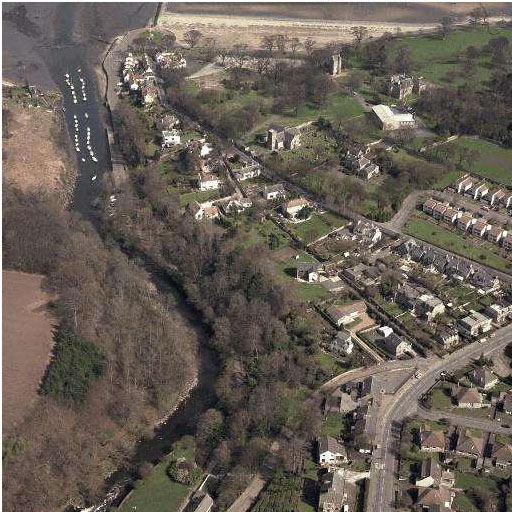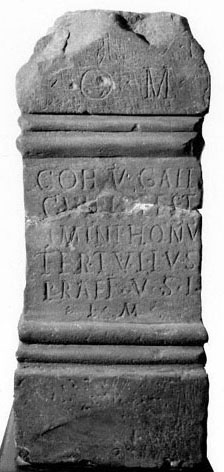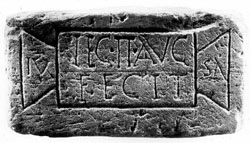Alexander Gordon, writing in 1726, noted that ‘at Cramond, about
four miles west of Edinburgh … are still to be seen vestiges of
another great Roman station. Here several Roman inscriptions have been
dug up, and an incredible Quantity of Roman Coins …’. The
site stands on a bluff overlooking the mouth of the River Almond where
it flows into the Forth. Now the estuary is heavily silted, and accessible
only to pleasure craft, but in Roman times the water was deeper and quite
large vessels could have berthed here. The fort probably guarded a major
Roman harbour.

Aerial view of Cramond. The Roman fort
stood on high ground overlooking the river, centred on the present churchyard.
© SCRAN/RCAHMS
Houses now cover much of the site, and Cramond Kirk stands where the fort’s
headquarters building once stood. Excavations have been conducted piecemeal
in many parts of the site, and fragments of the remains can still be seen
today. No direct evidence has been found for a late first century fort,
although coins suggest that one may have existed in the vicinity. The
first known structures date to the Antonine period, and are probably to
be associated with Lollius Urbicus's invasion of Scotland and the building
of the Antonine Wall. In the early third century the
fort was reoccupied and refurbished, no doubt to support the campaigns
of Septimius Severus in 208-10.
A bath-house, of which no remains are now visible, lay outside the fort, and on the other side of the river is a large rock locally known as ‘Eagle Rock’. On it a figure, now much eroded, has been carved in a niche. It may represent Mercury, the protector of travellers.
|
© SCRAN/National Museums of Scotland |
Several inscriptions have been found at Cramond. They include a stone recording unspecified building work by a century of the Second Augusta Legion’s Fourth Cohort (above), and a dedication to the godesses of the parade-ground by the First Cohort of Tungrians under a centurion of the Twentieth Valeria Victrix Legion. Another altar (right) was set up to Jupiter by the Fifth Cohort of Gauls under their prefect, Lucius Minthonius Tertullus. This unit is also attested at South Shields, another probable Roman harbour at the mouth of the Tyne. South Shields appears to have been a major stores base, and it is likely that during Severus’s invasions of Scotland the river-ports at South Shields, Cramond, and Carpow on the Tay formed links in a maritime supply chain which supported the armies campaigning in the north.

© SCRAN/National Museums of Scotland
In 1996 a remarkable Roman
sculpture was found in the river bed at Cramond. It represents a lioness
devouring a naked bearded man. Two snakes emerge from beneath the lioness’s
body. These symbols represent death, and the triumph of the deceased’s
spirit. The sculpture was probably part of an elaborate funerary monument.
